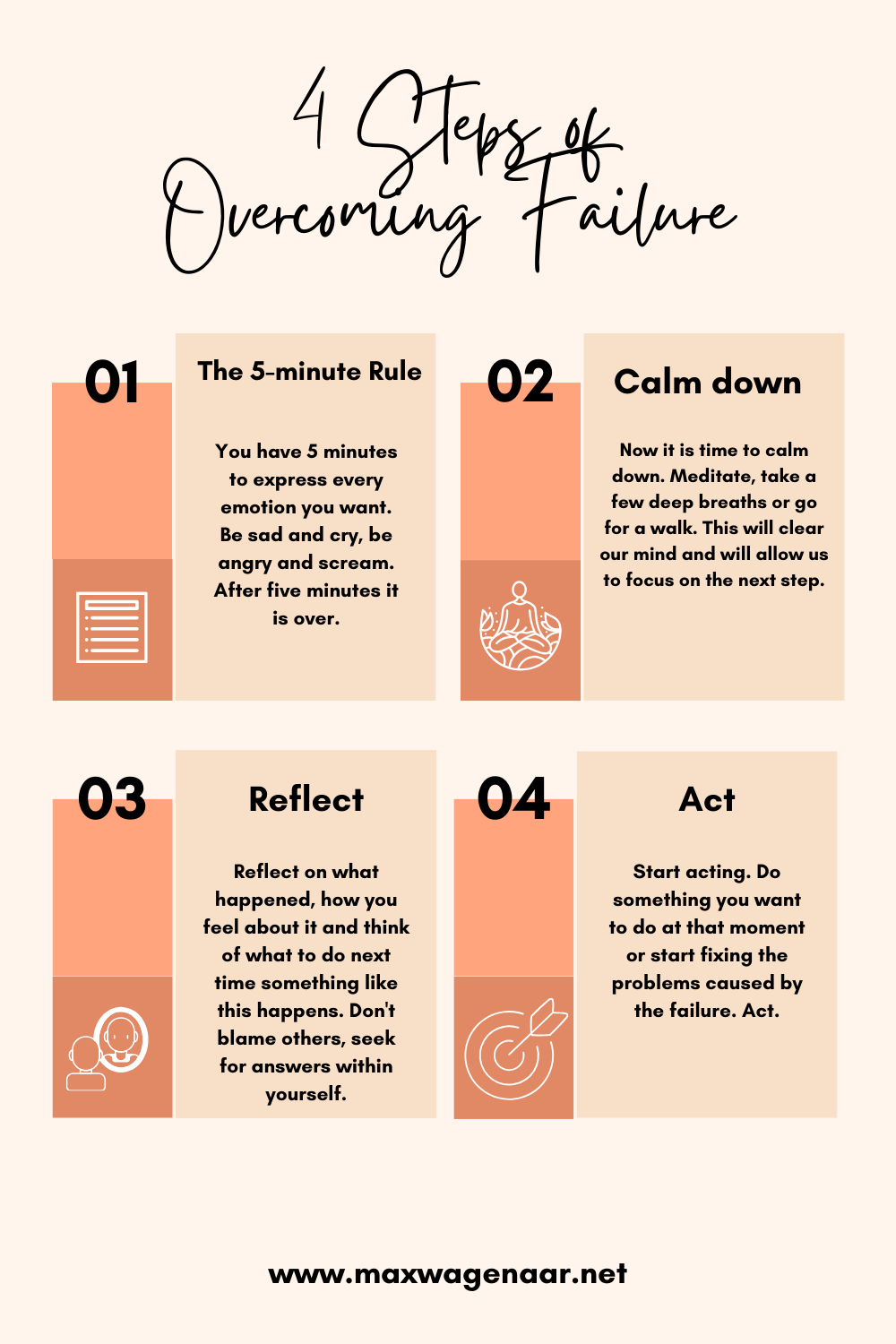Building Resilience: Practical Ways to Move Past Failure

Bouncing back after a failure is, for many, probably one of the hardest things to do in the world. The feeling of failure is something that is often very hard to overcome. We are sad, angry, anxious, full of guilt, or disappointed. We lack motivation to try again or try at all. We must learn to build resilience and move past these feelings of failure. We must learn to bounce back. This is easier said than done, which is why today we will discuss practical ways to move past failure.
We will discuss the following topics:
- The 5-Minute Rule
- Calming Down
- Reflecting
- Initiating Action
- Common Pitfalls
- Key Takeaways
The 5-Minute Rule
There are many types of 5-minute rules in the world, but this rule is focused on our emotions. Hal Elrod (author of “The Miracle Morning”) introduced this idea. It is quite simple. If something happened that we are angry about or sad about, the same feelings that come up after failure, we have five minutes to be angry about it or five minutes to be sad about it. We can cry about it for five minutes; we can scream out our anger for five minutes. But not more. After five minutes, it is over. After five minutes, we start again and have another attempt. Or we try something else after five minutes.

Calming down
After five minutes of expressing our emotions, it is time to calm down. We need to find the focus and determination to try again. That is often impossible to find if we stay in our emotions that were caused by the failure we faced. So, we need to calm down. Take a few deep breaths, count to ten, and take a few deep breaths again. If it is possible, try to meditate or go outside for a walk. These calming activities give us the time we need to relax again, and they will help us regain our focus.
Reflecting
Once we are calmed down, we can reflect on what happened. What caused our failure, and how did it make us feel? What should I do differently next time something like this happens? If it is preventable, how can I prevent it from happening again? Learn from it. Next time we will discuss how to learn from our failures, because that is easier said than done. Once we know what truly happened and how it made us feel, most of the time we will be motivated to continue our day.
If that is not the case, we can reflect even more. Think about the moments in the past where we bounced back from failure. If there are not that many memories, go look on the internet for inspirational stories of people who bounced back from failure. We can find thousands of stories of people who most likely had a bigger upset in their lives and still bounced back. Look for these; most of the time, they will give us some inspiration or put things into perspective. Another thing we can do is look forward and see what would become of us if we kept being stuck in this situation. Look what an ideal person in our eyes would do.
Reflection journaling is often a very good activity to do. Writing down our thoughts is a great way of expressing what we think, what we want, and what we feel. Read more about it here: Pages of Self-Discovery: The Magic of Journaling (maxwagenaar.net). For reflection, it is incredibly important to take responsibility. Write about how we could change ourselves, not what others could have done better.

Initiating Action
The next thing we need to do is act. This is probably the most important step. We need to initiate action because it will reduce our feelings towards failure and help us recover from it. It is not necessary to do something that will solve any of the problems related to the failure. Sometimes we need to do something completely different, but we need to do something that will take our mind off of these negative emotions. Some will immediately try to fix things, and others will do something else. If we initiate action, we will be fine.
Common Pitfalls
We should avoid the following things when trying to overcome feelings of failure:.
- Only blaming others
- Negative self-talk
- Isolating ourselves
- Ignoring the lessons we learned
- Setting unrealistic expectations
- Avoiding responsibility
- Fearing future failure
- Comparing ourselves to others
- Losing sight of our goals
- Overlooking self-care
We must avoid these pitfalls; they will only make things worse.
Key Takeaways
We have learned that to overcome failure, we can take four steps. First, we need to accept our failure by just letting out all our emotions. But only for five minutes. After these five minutes, we calm down. We must be calm to reflect on our failures and ourselves. Once we have done that, we must act. This way, we will overcome failure. However, we must avoid some common pitfalls.

Links
If you want to read more about this topic or related topics, you can use the following links:
The previous post about this topic was:
Extra:
Pages of Self-Discovery: The Magic of Journaling (maxwagenaar.net)
Hal Elrod's 5 Minute Rule to Handle Frustration - (blissfulroad.com)
Effective Relaxation Techniques for a Calmer Mind and Body (maxwagenaar.net)
The 7 Essential Steps for Putting Failure to Work | Berkeley Exec Ed
Why Do Some People Succeed after Failing, While Others Continue to Flounder? (northwestern.edu)
9 Strategies for How To Deal With Failure (Plus Tips) | Indeed.com







Member discussion